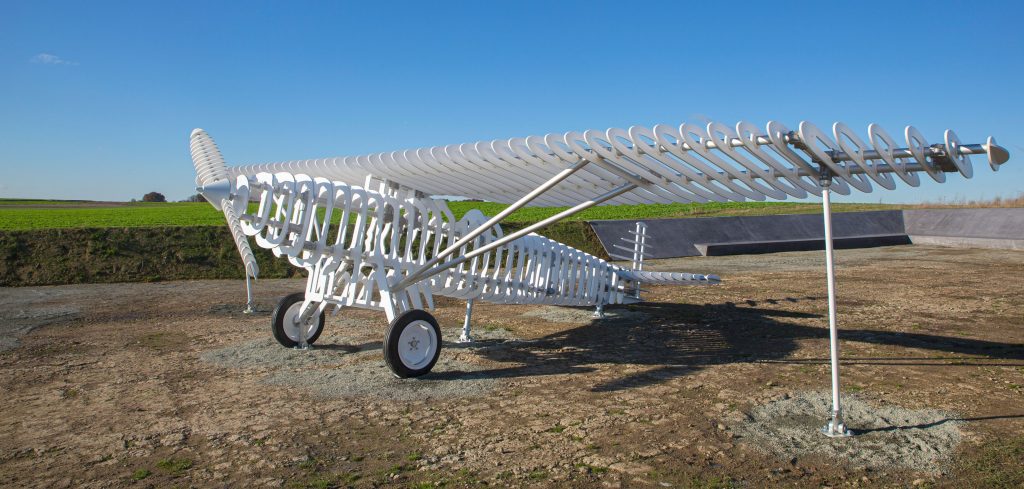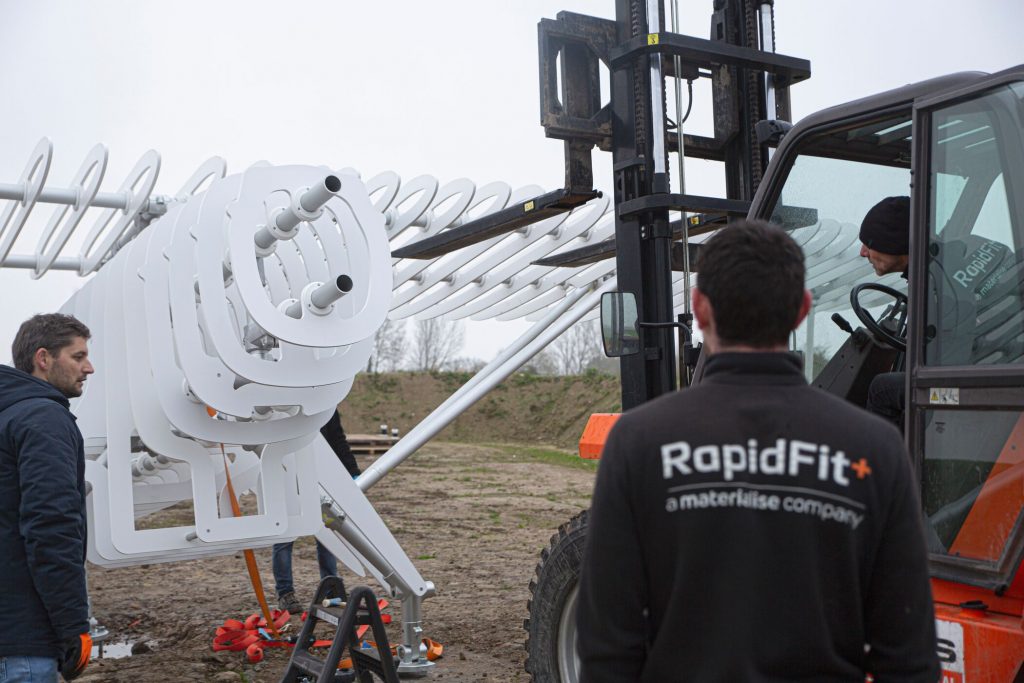
How 3D Printing Made A Life‑Sized Model Airplane From World War II
By creating a full-scale model of a 1930s airplane using 3D printing, the Manufacturing team from our parent company Materialise has breathed new life into a ghost from the past. Additive manufacturing was used to create the airplane model itself as well as to create assembly tools to deliver the consistent results required. After almost two years of development, the completed model is about to go on display.
When a government agency wanted to draw the attention of visitors to an old military landing strip in Honsem, Belgium, they needed a centerpiece for the planned development of the rural landscape. They wanted something which would represent the historic importance the area had during World War II. A lifesize model of a Belgian reconnaissance airplane of the 1930s, the Renard R31, was a perfect choice. VLM (Vlaamse Landmaatschappij) is a government agency committed to rural development by restoring or developing Flemish landscapes. While doing so, they also take care of local heritage. To make their vision a reality, VLM engaged with Materialise Manufacturing to execute the model using 3D printing.
“Rather than create an exact replica of the airplane, VLM wanted a more abstract representation,” explains Nicolas Meiresonne, from Materialise’s Design & Engineering services. “They were looking for a ‘ghostlike’ rendition that still looks recognizable as the Renard 31. So we agreed on a concept using slices, showing cross-sections of the plane, using a combination of 3D printed parts and traditionally manufactured contours.” The manufacturing process used 3D printing, not just for the materials but also for elements of the production and assembly tools. The result is a robust yet elegant rendition, almost like a skeleton of the original reconnaissance plane.
3D-printed components and assembly tools
3D printing is the ideal choice for one-off art projects like this one, where other manufacturing options would be less cost-effective. Conventional manufacturing relies on economies of scale in order to become affordable, unlike 3D printing which is a more viable option for custom designs.
Over one hundred individual PVC foam plates or “contours” were used to create the model, held together by around 450 3D-printed connectors. The contours are fitted onto an aluminum framework configuration of the Renard R31. A mix of standard and custom milled connectors join the framework’s aluminum tubes to each other. The contours are then fastened on the aluminum tubes with polyamide (SLS) 3D-printed connectors. The contours are clamped in place to the connectors with three bolts.

Materialise’s Design & Engineering services collaborated with RapidFit, the company’s specialist tooling division, to assemble the project
“We designed the system in such a way that there are at least two tubes running through every contour, ensuring that the contours will stay in place and will not rotate around the tubes,” explains Wouter Maleux, from Materialise’s Design & Engineering services. “Besides using printed connectors, 3D printing was also a key part of the manufacturing process itself. We designed drill jigs using 3D-printed parts and carbon tubes to create a smooth assembly process that would give clean, consistent results.”
The finished plane is reminiscent of balsa wood model airplanes found in toy stores. But rather than a 1:72 scale model that might hang from a child’s bedroom ceiling, this model is the same size as the plane it represents.
The completed model will be displayed outdoors in an open field. Therefore, like a real airplane, it needs to be able to withstand different weather conditions, all while staying firmly on the ground! The creators wanted to ensure that it can also survive the wear and tear of visitors who can’t resist touching it while taking selfies. The Materialise Design & Engineering team undertook an FEA analysis with different load scenarios and wind speeds of up to 100km/hour and are confident that it will look just as good in the years to come as on the day it is unveiled.
The model was pre-assembled by Materialise Manufacturing in Leuven before making the 20km journey to its permanent home — on land rather than by air.
Aviation’s past, and its future
Of course, 3D printing was not available at the time the original airplane was manufactured. Even assembly lines were a relatively new manufacturing development in the 1930s. However, these days 3D printing plays an increasingly important role in the aerospace industry. It offers many benefits including saving both time and expense.
Airlines and maintenance companies, known as MROs, can print aftermarket spare parts wherever and whenever they need, rather than keeping large amounts of stock warehoused before transporting them to other locations. Since 3D printing’s design freedom enables lightweight parts, they can mean greater fuel efficiency too.
Thus, the Renard 31 model is a vision of aviation’s past while offering a glimpse of its future. Robust, elegant, creatively engineered — a true visual representation of all that additive manufacturing and aviation have to offer.
The sky really is the limit with 3D printing! What will your next project be? Upload a model today to get started.
Recommended Articles
No related posts.


